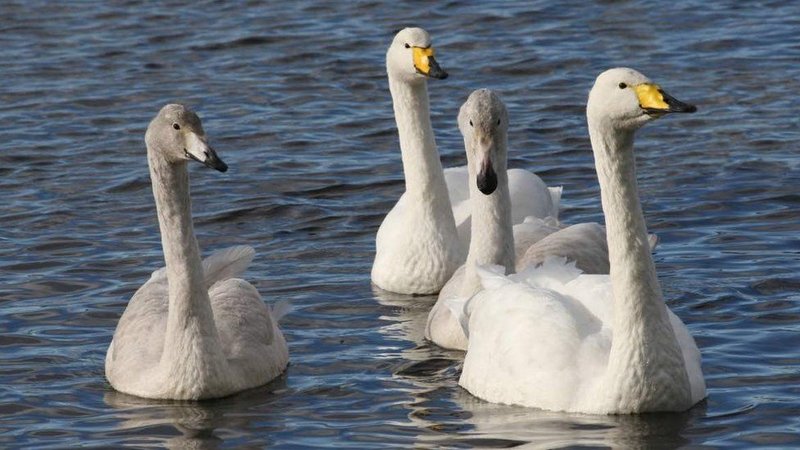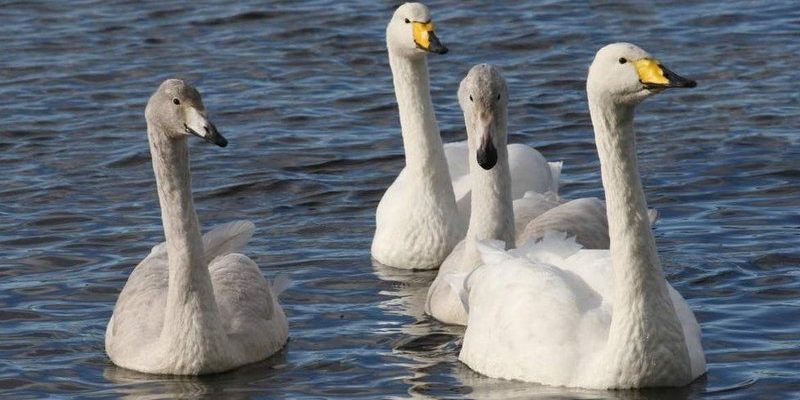
So, what does it mean to conserve these magnificent creatures? Basically, it involves protecting their habitats, ensuring clean waterways, and raising awareness about their importance in our environment. Imagine trying to keep a delicate houseplant alive; you wouldn’t want to drown it in water or place it in a spot with no sunlight. Similarly, swans need a safe, nurturing environment to thrive. Let’s dive into the various conservation efforts aimed at protecting our beloved swans and understand why they matter so much.
The Role of Habitat Restoration
One of the most significant steps in swan conservation is habitat restoration. Swans rely on wetlands, ponds, and lakes for their survival. Unfortunately, urban development, agriculture, and climate change threaten these vital areas. When wetlands are drained or polluted, swans lose both their feeding and nesting grounds.
That’s why many conservation groups focus on restoring these habitats. They work diligently to clean up polluted water, replant native vegetation, and create new wetlands where swans can thrive. Imagine flipping an old, neglected garden into a lush paradise—this is what’s happening with these efforts. By restoring habitats, we’re not just giving swans a place to live; we’re also helping countless other species thrive in a healthier ecosystem.
The Importance of Water Quality
Have you ever noticed how murky water can make a beautiful pond look uninviting? Swans need clean water to forage for food and stay healthy. Unfortunately, pollution from agricultural runoff, sewage, and industrial waste can contaminate their habitats. When water quality deteriorates, swans suffer, often leading to health issues and population decline.
To combat this, many conservation organizations monitor water quality and implement measures to reduce pollution. For example, they may work with local farmers to promote sustainable farming practices that limit runoff. This includes planting cover crops and creating buffer zones along waterways. By taking these steps, we’re ensuring that the water swans rely on remains clean and healthy.
Legal Protections for Swans
Legislation plays a vital role in protecting swans. Different countries and regions have varying laws that safeguard these birds and their habitats. For instance, in the United States, the Migratory Bird Treaty Act makes it illegal to harm, hunt, or possess swans without proper permits. This legal protection is crucial in ensuring that swan populations remain steady.
However, laws alone aren’t enough. Conservationists work tirelessly to enforce these regulations and raise awareness about the legal protections available for swans. They educate the public about the importance of respecting these laws and the benefits they bring to local ecosystems. Here’s the thing: if more people understand and appreciate the regulations surrounding swan conservation, they’re more likely to advocate for change.
Community Involvement and Awareness
Community involvement is another essential aspect of swan conservation. Local groups, schools, and individuals can make a significant impact simply by getting involved. This might mean organizing clean-up days at local lakes, raising funds for conservation projects, or even spreading awareness through social media.
Imagine attending a local event where kids are learning about swans while painting signs to promote conservation efforts. This kind of community engagement not only helps to protect swans, but it also cultivates a sense of responsibility and appreciation for nature. When communities come together, they can create a ripple effect, encouraging more people to join the cause.
Research and Monitoring Initiatives
Research is crucial for understanding the challenges swans face. Conservation organizations often conduct studies to gather data on swan populations, habitat conditions, and threats. For example, tracking swan movements can help researchers identify critical habitats and migration routes.
Monitoring is equally important. By keeping tabs on swan populations and their health, conservationists can better assess the effectiveness of their efforts. This ongoing research helps inform future conservation strategies, ensuring that efforts remain relevant and effective. Let me explain it this way: informed decision-making is like having a well-stocked toolbox for fixing a car. The more knowledge you have, the better equipped you are to tackle the issues at hand.
Collaboration Across Borders
Swans don’t recognize human-made borders, so conservation efforts often require international cooperation. Organizations from different countries collaborate to develop and implement strategies for swan protection. This can include sharing research findings, developing joint conservation projects, and aligning legal protections.
One great example of such collaboration is the International Swan Conservation Plan, which focuses on the conservation of endangered swan species worldwide. By pooling resources and expertise, conservationists can create a more significant impact than any single organization could achieve alone. Honestly, it’s kind of like forming a superhero team—together, they can tackle challenges that are just too big for one group.
Challenges and Future Directions
While conservation efforts are essential, they’re not without challenges. Climate change poses a significant threat to swan habitats, leading to rising water levels, extreme weather, and altered migration patterns. As swan populations face these changing conditions, it’s crucial for conservationists to adapt their strategies accordingly.
Another challenge is funding. Many organizations rely on donations and grants to support their work. Securing sufficient funding can be a constant battle, making it challenging to implement long-term projects. Here’s the thing: awareness and advocacy can help increase funding as more people recognize the importance of swan conservation.
Despite these hurdles, there’s hope for the future. By raising awareness, building strong community connections, and fostering international collaborations, we can continue to protect swans. The key is to stay engaged and committed to the cause.
How You Can Help
No matter who you are, there are ways you can contribute to swan conservation. Here’s a brief list of actions you can take:
- Support Local Organizations: Volunteer or donate to groups focused on swan conservation.
- Spread Awareness: Share your knowledge about the importance of swans and their habitats with friends or on social media.
- Participate in Clean-Ups: Join local efforts to clean up lakes and wetlands where swans live.
- Practice Sustainable Living: Be mindful of your actions that could impact swan habitats, like reducing plastic use or avoiding harmful chemicals.
By taking even small steps, you can play a part in ensuring that these majestic birds continue to thrive for generations to come.
In closing, swan conservation is more critical than many realize. With the combined efforts of habitat restoration, legal protections, community engagement, and international collaboration, we can help protect these elegant creatures. But it takes all of us working together—because every little bit counts in the grand scheme of conservation. So, the next time you see a swan gliding gracefully across the water, remember the importance of preserving their home. We all share this planet, and it’s up to us to protect its beauty.

